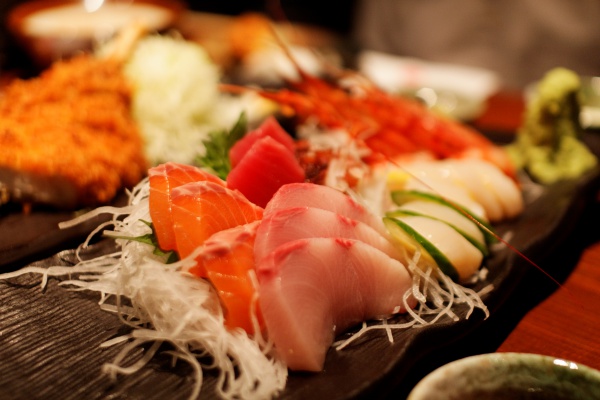Facts About Sashimi
Sashimi is a cherished Japanese delicacy consisting of fresh, raw fish or meat, thinly sliced and typically accompanied by soy sauce. The term "sashimi" translates to "pierced body" in Japanese and has historical roots extending back to the Muromachi period. In Japanese cuisine, sashimi is highly revered, often served as either the initial course in formal meals or as the main dish. It is important to distinguish sashimi from sushi, as sashimi does not include vinegared rice.
The preparation of sashimi is considered an art form, with various slicing techniques tailored to the type of fish, its age, and the season. Common cuts include hira-zukuri (flat slice), usu-zukuri (thin slice), kaku-zukuri (square slice), and ito-zukuri (thread slice). Popular ingredients for sashimi include salmon, tuna, squid, shrimp, and octopus. While most ingredients are served raw, some, like tataki, are lightly seared, and others may be cooked depending on their texture.
Sashimi is not limited to fish; it can also feature vegetarian items or raw meats such as beef or chicken. However, safety is a significant concern due to the risk of foodborne illnesses from bacteria or parasites in raw fish. To mitigate these risks, freezing is often used to kill parasites, and some fish are treated with carbon monoxide to maintain freshness. Consuming chicken sashimi carries a particularly high risk of food poisoning due to harmful bacteria.
Environmental issues also come into play, especially with ingredients like bluefin tuna. Overfishing has led to declining populations of these fish. Farming bluefin tuna has been suggested as a solution, but it may not be sustainable in the long term due to a preference for wild-caught fish among consumers.
